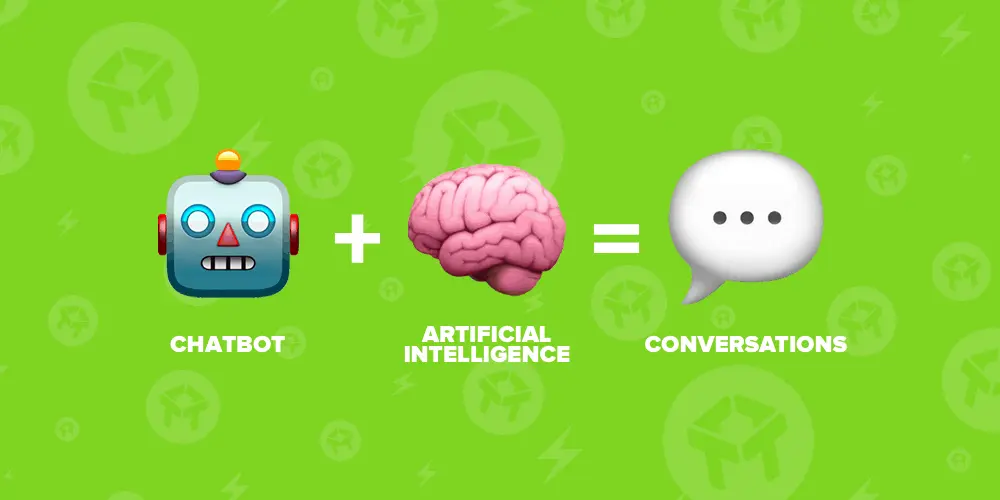I’ll come right out and say it. AI chatbots are absolutely fascinating – and they’re right on the front lines of artificial intelligence and human intelligence. Today’s chatbots can do it all, from helping you order a pizza, to guiding you through a complex B2B sales process.
But different kinds of chatbots are built to do different kinds of things. And that can get confusing. So I thought it was high time to highlight the difference between traditional chatbots – built to collect leads and nurture prospects – and AI chatbots.
AI chatbots can understand language outside of a set of pre-programmed commands and continue learning based on the inputs it receives. They can also make changes based on patterns and become smarter over time as they experience new situations. This type of chatbot can be applied to a range of uses – from sentiment analysis to making predictions about what a visitor is looking for on your website.
Here’s a bit more about AI chatbots and when to use them.
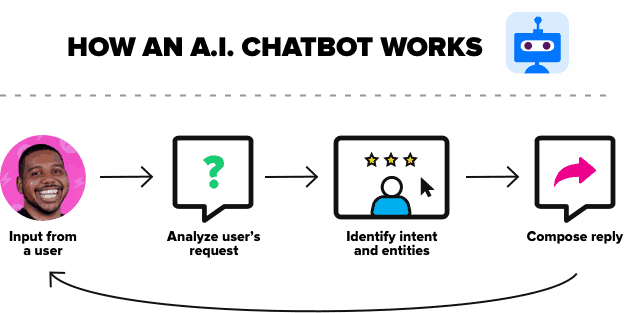
What Is An AI Chatbot?
People often use terms like chatbot, virtual assistant, automation and AI interchangeably.
But, there’s a key difference between AI chatbots and just plain chatbots – and at its core, that difference boils down to understanding the difference between artificial intelligence and automation.
Drift’s chatbots follow rules established in advance. In other words, they stick to the script, so that sales and marketing teams can answer the exact questions needed to sell to their audience.
If you look back at our playbooks, you’ll get a sense of how this process works. Users kick off the bot-building process by selecting the type of conversation they’d like to set up:
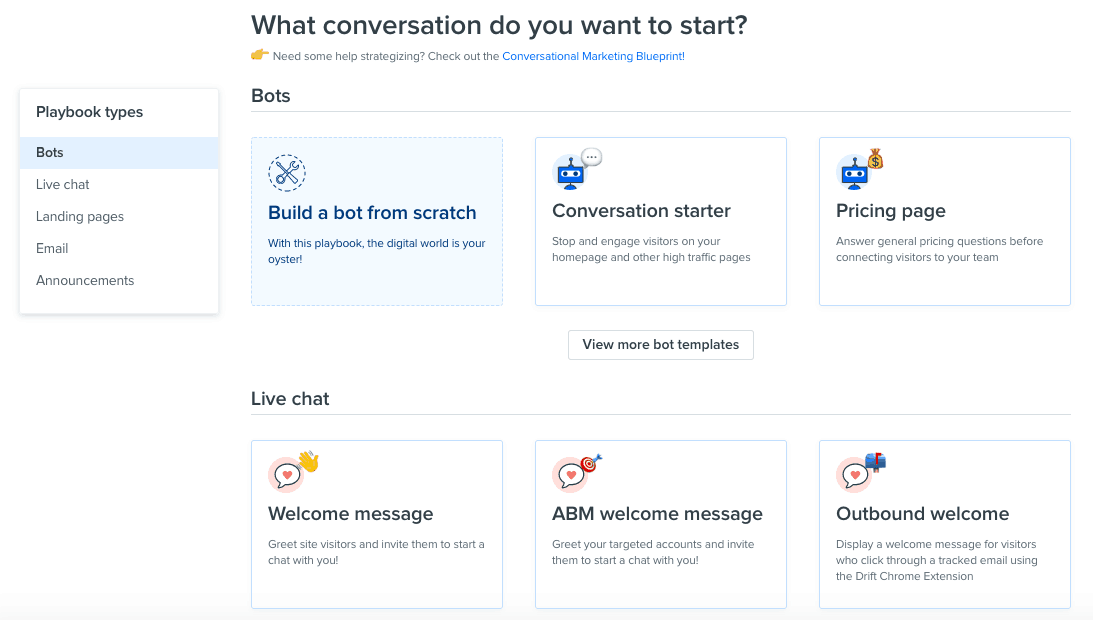
For instance, a customer might install several bots on their site, each linked to a specific goal.
A home page might host a “greeting” conversation, which starts off with a quick hello, and a general question like, “what brings you to our website today?” In this case, the goal is to learn more about a customer so you can point them in the right direction.
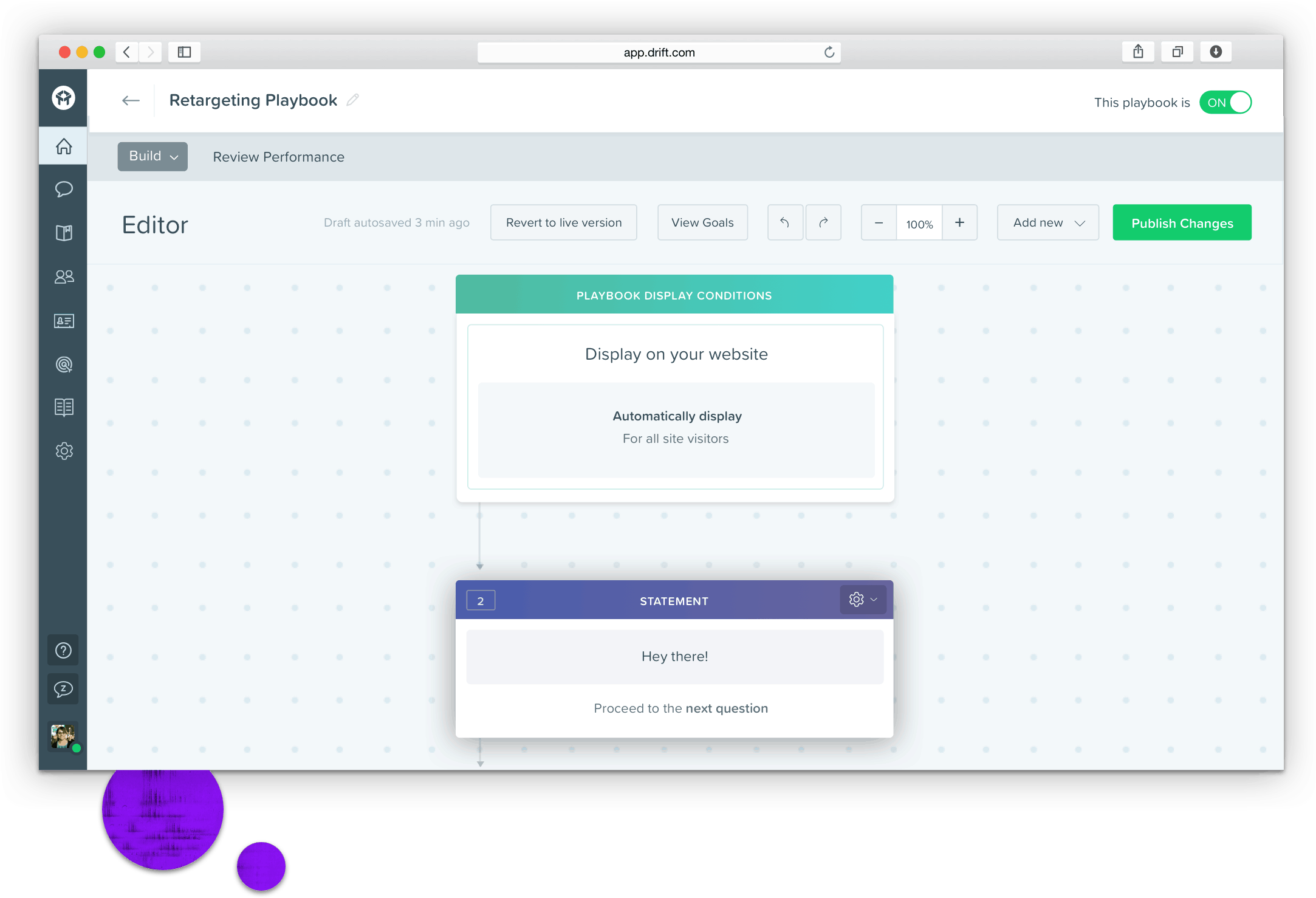
Or, you might use something like this on a page that highlights specific features. Again – you’re gathering the information needed to find a solution that fits with their needs.
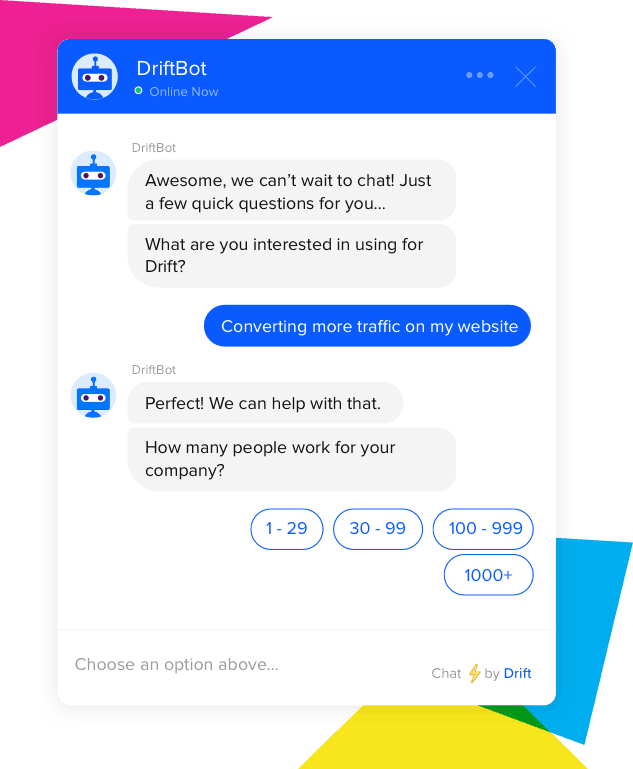
The chatbot displays this information based on a set of rules set by the human operator who can route responses based on keyword matching.
Rule-based chatbots are not programmed to respond to changes in language, rather they have a structured dialog that answers specific questions by matching the user input to programmed answers. The questions our Driftbot example highlights above are tightly controlled. This means that the script is designed to give salespeople the qualifying details needed to inform their next sales script.
However, if a visitor arrives on the website and asks something the programmer didn’t think of, the chatbot won’t be able to produce an answer.
An AI chatbot is trained to operate more or less on its own, using a process known as Natural Language Processing, or NLP, combined with artificial intelligence and the annotation of human data.
AI chatbots get smarter over time.
How to Make an AI Chatbot
Building an intelligent chatbot yourself requires some serious expertise. I won’t go into too much detail explaining the nuances of NLP, deep learning, and other algorithmic forms of intelligence.
At the base level, an AI chatbot is fed input data, which it interprets and translates into a relevant output – or the response the user receives after asking a question.
So the AI chatbot receives information from a programmer. And then over time, it’s “trained” to understand context through several algorithms that involve tagging parts of speech.
In this example, let’s assume the programmer is teaching the bot to answer the question, what is the capital of England?

These days, you don’t need to be a seasoned programmer (or even understand the inner workings of the algorithms) to set up your own AI-based chatbot.
How to Choose the Best AI Chatbot for Your Needs
The first thing you’ll need to do when selecting an AI chatbot platform is to assess your needs, along with your organization’s technical capabilities. Do you need a rules-based chatbot or an AI bot that helps you analyze massive datasets and continues to build on its existing knowledge?
If you have a use case for an AI bot and are beginning to explore your options, here are a few things you should think about as you begin doing research.
Programming Language
Despite the fact that many AI chatbot builders come with drag-and-drop interfaces, the choice of language is still an important consideration. Java and C++ offer more speed than Python-powered bots, but Python is easier for those teams who don’t have a ton of experience building chatbots.
Ease of Use
How much work can your team reasonably handle when it comes to building a chatbot? Some platforms are easier than others, but the trade-off is that the drag-and-drop style programs don’t always make room for customization.
What Kind of AI Do You Want?
You’ll want to find a chatbot platform that comes with the ability to understand tone, sentiment, and customer personalities so that it can deliver the best possible experience. This includes analyzing a situation and making a decision to escalate to a live agent or present a solution automatically.
Does it Connect with Your CRM?
If you’re using chatbots to gather insights, you want to pick a program that syncs up with your CRM – and other tools like your marketing software, email service provider, and so on. One of the key reasons brands seek out an AI tool with analytical capabilities is so they can quickly review data and make decisions.
Is it Pre-Trained?
Of course, chatbot platforms are built on an existing AI data set. But, you’ll want to make sure you select an option that comes with some understanding of terms and knowledge specific to your industry. A general chatbot might not be ready “out of the box.” As such, you’ll want to account for the amount of time required to get your bot trained for the job.
Which Is Better – AI Chatbots or Rule-Based Chatbots?
Well, it all depends on the use case.
Rule-based chatbots, though not as flexible as their AI counterparts, do have advantages. For brands that want to create a predictable, tightly controlled experience for users, chatbots allow them to focus on guiding their audience toward a specific goal, be it speaking to a human or signing up for a guided demo.
If you are looking for a smarter bot that can handle complex queries or help you make sense of massive datasets, AI bots may be a better choice here. Common use cases include the following:
- Sentiment Analysis – AI bots can comb through massive data sets to identify customer complaints, reviews, and mentions across multiple touchpoints.
- Understanding Behavioral Patterns – Here, chatbots can be used to help brands identify patterns humans might not detect.
- Learning and Adapting to User Preferences – For example, if you want to offer customers a personalized solution, such as saving preferences, mirroring language, delivering customized content or offers automatically.
But, it’s worth pointing out that, sometimes, when bots have a “mind of their own,” they end up in hot water, delivering inappropriate responses or displaying algorithmic bias. Or, on a less damaging note, go off script from time to time.
The key advantage of an AI chatbot is that it is capable of learning a lot about its users and can apply knowledge effectively with little intervention.
Wrapping Up
Chatbots are becoming an essential piece of the workplace technology stack, and brands that have already embraced them have an advantage over those that have yet to make moves toward automation, AI, or both.
Editor's note: This post originally appeared on Drift's website. You can see it here.
Mark Kilens
Mark Kilens is VP of Content and Community at Drift where he leads the blogging, editorial, social, Drift Insider, and HYPERGROWTH teams. Prior to joining Drift, he served as VP and founder of HubSpot Academy.


